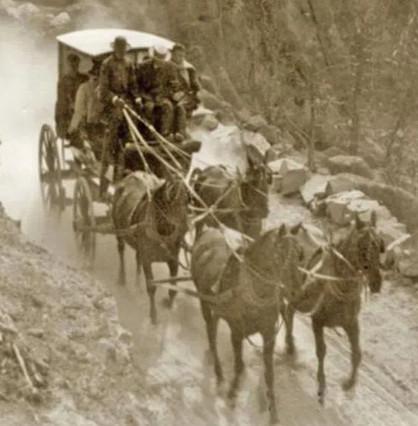Sources refer to this site as either Upper Sweetwater or South Pass Station but generally they agree on its identity as a station. Two French-Canadians managed station operations at South Pass, near the Continental Divide. Franzwa indicates South Pass in his Oregon Trail maps and specifically identifies Upper Sweetwater Pony Express Station several miles northeast of the pass. (NPS)
Located 12 miles from Rock Creek Station and 12 miles from Pacific Springs Station. This location has been known as the “South Pass Station” while it was being used as a military post, as the “Burnt Fork” following the time that it was burned, “Burnt Ranch” and “The Ninth Crossing of the Sweetwater” and Gilbert’s Trading Post. Station Tender was Gilbert.
It was used as a Pony Express station, a telegraph station and as a stage station during the period these different enterprises functioned through this area.’ South Pass was perhaps the most significant transportation gateway through the Rocky Mountains. Indians, mountain men, Oregon Trail emigrants, Pony Express riders, and miners all recognized the value of this pass straddling the Continental Divide.
Bounded by the Wind River Range on the north and the Antelope Hills on the south, the pass offered overland travelers a broad, relatively level corridor between the Atlantic and Pacific watersheds. For early travellers passing through South Pass, the gradual incline left them unaware that they were crossing the Continental Divide.
Between 1840 – 1860 an estimated 300,000 settlers traveled through the gap, their wagon wheels leaving deep ruts in the earth. (Expedition Utah)
South Pass City This settlement was situated near the place where the overland route left the Sweetwater River; it was less than a year old, being “one of the many mushroom growths which the presence of gold in the Rocky Mountains . . . caused to spring up” (Burton, 199–200). (Another town of the same name, still in existence today as a historic site, was founded several miles north in 1867:
Chapter 12: note for 77.15," in Roughing It : an electronic text. 2016
